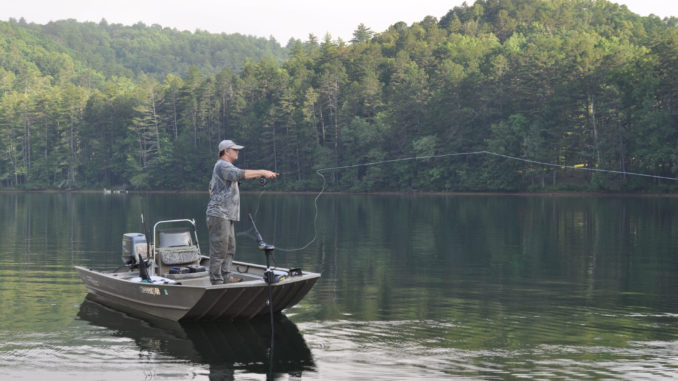
The flow regime in Apalachia Lake is starkly different from what anglers expect with other mountain lakes. Water entering the lake through Hiwassee Dam is very cold, so the lake can support big trout, and it’s oxygenated by the Tennessee Valley Authority as it passes through the dam.
After water has flowed into Apalachia Lake during peak times of electric power generation, it is pumped back upstream into Hiwassee Lake during times of low power demand. Anglers usually find the water flowing gently in the morning, and they can be caught off-guard when the flow increases significantly during a hot afternoon. The surface temperature can also change dramatically, becoming much colder, which makes fishing for trophy trout difficult.
The powerful flow generated by water entering the lake can also have an impact on launching and retrieving boats at the ramp. Anglers should not leave their boats unattended, because they might be left high-and-dry or float free, even on anchor lines, and drift into rocks when the water level is rapidly changing.
While water releases from Hiwassee Dam are scheduled, the schedule can change without warning due to weather conditions or power demand. The plant has two generators; if both are running, the water is too swift for good fishing. The best fishing occurs when one generator is running.
For scheduled release dates and times, visit www.tva.gov/Environment/Lake-Levels/Apalachia.





Be the first to comment